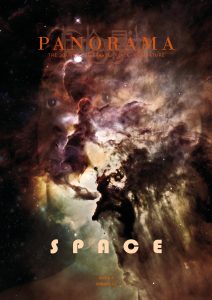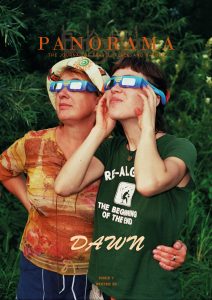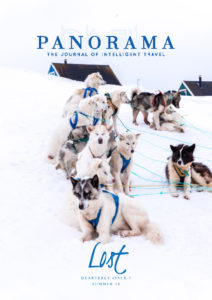“There are three deaths. The first is when the body ceases to function. The second is when the body is consigned to the grave. The third is that moment, sometime in the future, when your name is spoken for the last time.”
― David M. Eagleman, Sum: Forty Tales from the Afterlives
My family has been making headstones and caretaking cemeteries for almost a hundred years. We’ve spent a lot of time thinking about death, memorializing it, and planning for our own. It’s a hazard of the business, I guess. Growing up around this occupation informed my childhood. I went to work with my dad. While he set stones, the marble Madonnas, lambs, and angels provided the landscape for my imagination and play. Although never instructed in any religion, I wasn’t immune to the sacredness of its iconography. I used to collect shiny stones, dragonfly wings and snail shells to lie at the feet of Mother Mary’s statue. I created my own bug cemetery–matchbox coffins for all the flies I found in the windowsill, and a crucifix of a dead beetle that I had fashioned from sticks and twine.
When I grew older my travels took me to some of the great tombs of the world. Many of the world’s most popular travel destinations are tombs, and some of the greatest monuments are monuments to the dead. I always felt as though these tomb makers were my ancient kin. We were part of a long line of craftsmen, granite cutters, shape carvers and caretakers. The first time I was in London I went to the British Museum and held my hand close to one of the pharaoh’s heads. It was 5000 years old, and I thought I could feel the vibrations of all the people who had come before me.
I remember hearing a tale when I was younger that the craftsmen of ancient Egypt were buried in the tombs they engineered for the pharaohs. Legend had it that the pharaohs were so distrustful of the tomb makers revealing their sacred treasures that they instructed the workers to be buried alive in the very same crypts. I later learned this was untrue. Nevertheless, as a child, I fancied that my family was somehow connected to these secret societies, like we too carried with us some of the mysteries of the art of dying just by our proximity to the craft of making headstones and by caring for the grounds on which they rest.
Of course, some of the most celebrated tombs for the greatest historical figures were made by and for men. As a woman traveler, I found myself more interested in seeking out women in memoriam, if I could find them. Maybe I wanted to see a part of myself in these granite reflections.
In the tombs of the Valley of the Kings and Queens, my Coptic guide, Yusuf, told me about Queen Hatshepsut, that she was the greatest king of Egypt, but that her stepson was jealous of her achievements. So jealous, that when he took her place, he had her name scratched out of the rock and replaced with his own. These attempts to scratch out lives sometimes work, although the evidence is never completely erased. One needs only to keep looking and keep digging. The bones eventually rise to the surface, even if the names do not.
Another example of women memorialized, the great temples of Cambodia, display carved out massive corridors in rock of celestial angels, the Apsaras. The feminine forms are responsible for a fascinating instance where life imitates the art of death. Cambodian women undergo intense training to learn to dance and adopt the appearance of these celestial angels. To accomplish the unearthly look, women spend years mastering delicate movements with their fingers, bending and even breaking them to achieve the poses. The 2000-year-old tradition and training nearly vanished in the 1970s when the Khmer Rouge launched its genocidal campaign. An estimated 400 Apsara dancers and musicians performed at the beginning of the conflict in Phnom Penh Opera House. At the end, most of the performers had been tortured and killed. By the time I came to Cambodia, evidence of the bullet scars in the statues had mostly been erased, but there were stories of the Apsara statuettes being used as target practice by bored guards. Their breasts shot off, their hands cut clean at the wrist, or their fingers broken—death memorials imitating life, imitating death, imitating life, imitating death.
*****
My first trip overseas, I packed such an enormous backpack that I looked like a deformed turtle and walked about as fast. Although my packs would get smaller as I got older, traveling has always felt like a turtle’s journey for me. In the causeway at Angkor Wat, it is turtles all the way down. The architecture of the temples is, in part, designed as a passage to the otherworld. On the east side, the creation story is carved on a 50-yard wall, depicting the Sea of Milk churning with Naga, the many-headed snake monsters. As the Mountain of Meru begins to sink into the abyss, Vishnu takes the form of a turtle and swims under the Mount to raise it from the water. The world sits on Vishnu’s turtle’s back.
Cambodia also holds one of the most graphic mementos mori in the world, a glass-walled Buddhist Stupa, filled with roughly 5,000 human skulls. It marks the killing fields of Choeung Ek.
In the stupa, it’s skulls all the way down.
Many of these skulls were crushed or shattered, evidence of another failed attempt to scratch out and erase lives. Most of the dead at Choeung Ek were former political prisoners who had been kept by the Khmer Rouge in Tuol Sleng, a torture and execution center. Tuol Sleng had formerly been a high school. When I visited the killing fields and Tuol Sleng, I had been teaching high school for about fifteen years, the last five in Beijing. Looking at the faces in the portraits and photos of the victims, it was hard not to superimpose the faces of my students and colleagues on the wall. I tried to imagine—it seemed important to imagine that this could happen to anyone, that no one was immune.
Do we have a responsibility to witness for the dead? To visit their graves and listen for their voices? The memorials say yes. The granite still speaks their names.
Seven years ago, I moved just down the street from the cemetery in Helena, Montana, where four generations of my family are buried on Forestvale Road. This cemetery has its own history of erasure. In the 1860s, about ten percent of the population were Chinese. However, after anti-immigration legislation passed, the Chinese experienced increased hostility. The new political landscape made it difficult for the Chinese to live here. Because they were forced to leave, many of the graves were left unmarked, or if they had been marked, no one was left to care for them. Many of these graves were vandalised and eventually abandoned. The northwest corner of the cemetery is known as China Row. To the east, a field in the Lewis and Clark County Cemetery designates some of the county’s unclaimed dead. Many of these graves are also unmarked. The deceptive emptiness is, in itself, a memorial to a forgotten people not quite forgotten.
A few years ago, my dad gave a presentation to the Montana History Foundation in Helena. He opened with these words from British Prime Minister, William Gladstone, “Show me the manner in which a nation cares for its dead, and I will measure with mathematical exactness the tender mercies of its people, their respect for laws of the land, and their loyalty to high ideals.” The Prime Minister reminds us of our obligation to honor the dead. Looking out at China Row and other deceptively empty cemetery lots, maybe we sense that we could have done better, that we need to do better for all the living and for all the dead. This time of year, we are reminded of the dead. The ice and snow and frozen earth are a call to remember that death is coming. Time stops for no one. Tempus fugit. Listen to the voices while we can, and remember to say their names.











